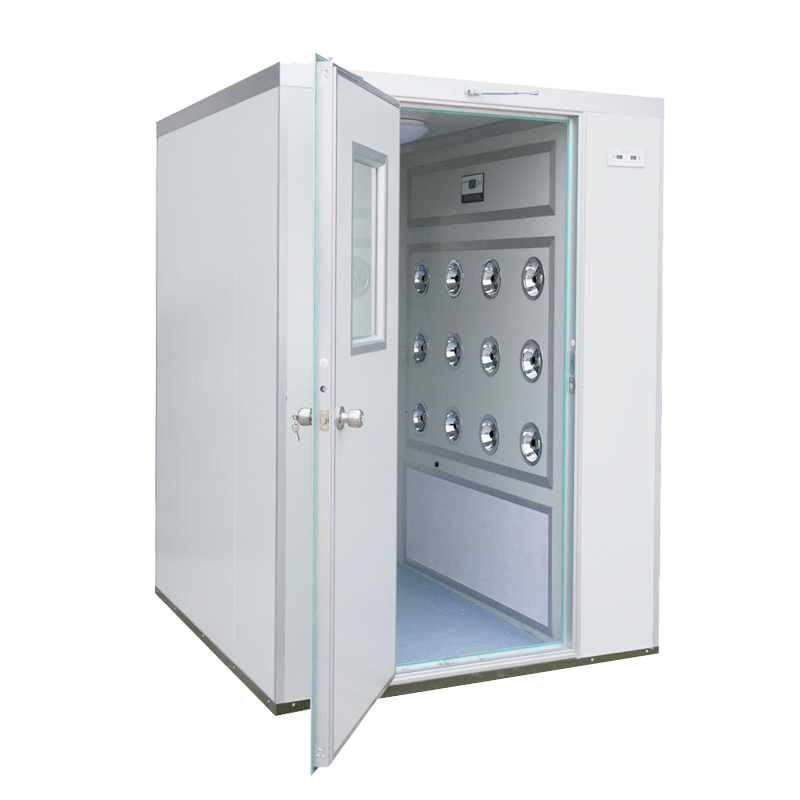

Air showers are highly effective at removing contaminan […]
Air showers are highly effective at removing contaminants, particularly loose particles, from personnel, equipment, or materials before they enter controlled environments such as cleanrooms. Their effectiveness lies in the combination of high-velocity, filtered air streams and well-designed airflow patterns. Here's why air showers are effective at contamination removal:
High-Velocity Air Streams: Air showers generate high-velocity air streams directed at personnel or objects from multiple nozzles or jets. These air streams have sufficient force to dislodge and remove loose particles, including dust, lint, pollen, and other contaminants, adhering to surfaces.
Uniform Coverage: The design of air showers ensures uniform coverage of the entire body or object being decontaminated. Nozzles or jets are strategically placed to ensure that air reaches all surfaces, including clothing, skin, and equipment.

Multiple Angles: Air streams are directed from various angles to ensure that particles trapped in crevices, folds, or hard-to-reach areas are effectively removed. This comprehensive approach minimizes the risk of residual contamination.
Filtered Air Supply: The air used in air showers is filtered through high-efficiency particulate air (HEPA) or ultra-low penetration air (ULPA) filters to remove particles from the air supply. This filtered air is clean and free of contaminants, ensuring that the decontamination process is effective.
Short Cycle Duration: Air showers typically have a short cycle duration, often lasting only a few seconds. This brief exposure to high-velocity air minimizes the risk of cross-contamination and prevents the transfer of particles into the controlled environment.
Controlled Environment Transition: Air showers create a transitional space between the less controlled outside environment and the highly controlled interior, allowing personnel or objects to undergo decontamination before entering the clean area.
Compliance with Cleanroom Standards: Air showers are designed to meet or exceed industry-specific cleanroom standards and regulatory requirements related to contamination control. Regular validation and testing ensure that they maintain their effectiveness.
Customization: Air showers can be customized to accommodate specific cleanroom requirements, including different cleanroom classifications (e.g., ISO Class 5, ISO Class 7) and the size or type of contaminants to be removed.
Enhanced Process Efficiency: By effectively removing contaminants from personnel, equipment, or materials, air showers contribute to improved process efficiency and product quality. Reduced contamination-related disruptions result in cost savings and enhanced productivity.
While air showers are highly effective at removing loose particles, it's important to note that they are not designed to remove all types of contaminants, such as volatile organic compounds (VOCs), chemical residues, or microorganisms. Additional measures, such as air filtration systems, gowning procedures, and equipment sterilization, may be necessary to address specific contamination concerns in controlled environments.
Our new models offer superb design;competitive prices and their new features give them distinct advantages over similar products from other manufacturers.